Comments / Questions (61)
![]() Genevieve Charlier wrote:
Genevieve Charlier wrote:
Bonjour je cherche d autres modeles comme celui ci sans couture que j ai eu du plaisir a faire et surtout a decouvrir les methodes d aiguilles circulaires avez vous d autres patrons gratuits avec de la laine indigo je n en trouve pas merci
12.11.2019 - 19:00DROPS Design answered:
Bonjour Mme Charlier, vous trouverez ici tous nos modèles tricotés en top down, qui sont généralement réalisés ainsi. N'hésitez pas à contacter directement votre magasin DROPS pour toute aide au choix d'une couleur. Bon tricot!
13.11.2019 - 08:45
![]() Genevieve Charlier wrote:
Genevieve Charlier wrote:
Bonjour dans les graphiques il y a les jetes blancs et des jetes noirs pourquoi sont ils distingues puisqu au rang d apres on fait des mailles torses pour le premier graphique j ai excecute a chaque jete des mailles torses comme s est precise pour chaque augmentationfaite par un jete au rang precedent est ce que je me suis trompee ou ai je mal interprete merci
19.09.2019 - 16:43DROPS Design answered:
Bonjour Mme Charlier, les jetés noirs se tricotent torse au tour suivant (= ils ne doivent pas former de trous) alors que les jetés blancs vont se tricoter normalement au tour suivant = ils appartiennent au point ajouré. Bon tricot!
20.09.2019 - 08:24
![]() Genevieve Charlier wrote:
Genevieve Charlier wrote:
Bonjour surtout merci car il est tres agreable d etre suivie et conseillee votre reponse confirme ce que je pensais mais je n etais pas sure de ma realisation grace a vous c est au top merci mille fois d etre a l ecoute surtout de prendre la peine de nous lire
14.09.2019 - 18:33
![]() Charlier wrote:
Charlier wrote:
Bonjour je comprends toutes les explications generales sauf le plus simple comme les cotes mousse =2tours pour moi les cotes peuvent alterner une maille endroit et une maille envers ou deux mailles de chaque mais que veut dire 2 tours et que veut dire tricoter un tour que cela soit a l endroit ou a l envers merci de m eclaicir
12.09.2019 - 18:39DROPS Design answered:
Bonjour Mme Charlier, quand on tricote en rond, le point mousse et le jersey ne vont pas se tricoter comme quand on les tricote en rangs. Pour le point mousse en rond, on va devoir alterner 1 tour endroit, 1 tour envers pour obtenir 1 côte mousse (que l'on obtient en rangs par 2 rangs endroit). Cette vidéo montre comment tricoter du point mousse en rond. Pour tricoter du jersey en rond, on va tricoter tous les rangs à l'endroit - cf vidéo. Bon tricot!
13.09.2019 - 08:20
![]() Mandrillon wrote:
Mandrillon wrote:
Bonjour, J'ai commencé ce modèle et je voudrais savoir si il n'est pas possible pour le diagramme n°2 de faire les augmentations dans le rang en jersey endroit, (sans jeté) ce sui serait plus facile pour faire le point dentelle sans erreur. Vous remerciant de votre réponse, Bien cordialement, J. M
16.08.2019 - 08:48DROPS Design answered:
Bonjour Mme Mandrillon, les augmentations dans A.2 sont placées de sorte qu'elles n'interfèrent pas dans le point ajouré, à intervalles réguliers en hauteur pour donner la forme souhaitée. Dans les premiers tours, veillez bien à ce que les jetés en noir soient tricotés torse et les autres à l'endroit pour éviter des trous supplémentaires. Bon tricot!
16.08.2019 - 09:33
![]() Detlev wrote:
Detlev wrote:
Hallo, nachdem ich A.2einmal in der Höhe gestrickt habe, Hab ich 308 Maschen anstatt der von Ihnen beschriebenen 294. Wo liegt denn mein Fehler?
27.06.2019 - 21:52DROPS Design answered:
Lieber Detlev, in der 1. Größe soll die letzte Reihe die mit dem Pfeil sein, dh die 2 letzten Reihen im Diagram strickt man nicht in diese Größe so haben Sie 12 M + 9 Zunahmen in jedem A.2 = 21 M in jedem A.2 x 14 Rapporte = 294 M. Viel Spaß beim stricken!
28.06.2019 - 06:34
![]() Pinuccia wrote:
Pinuccia wrote:
Vorrei realizzare questa maglia ma vorrei farla tutta traforata.Il numero delle maglie a maglia rasata è compatibile al proseguimento del punto traforato?Grazie!
30.03.2019 - 10:56DROPS Design answered:
Buongiorno Pinuccia. La maglia ha una forma ad A, quindi si continua ad aumentare per il davanti/dietro anche nella parte lavorata a maglia rasata. Per continuare con il motivo traforato, dovrebbe lavorare senza fare questi aumenti ai lati. Per un'assistenza più personalizzata, può rivolgersi anche via mail al suo rivenditore Drops di fiducia. Buon lavoro!
01.04.2019 - 09:02
![]() Morgane_tralala wrote:
Morgane_tralala wrote:
Bonjour l'équipe de Drop Design ! J'en suis à diviser mon ouvrage pour le dos, le devant et les manches. Je ne comprends pas ce que vous voulez dire par "tricoter au dessus des mailles" et "monter des mailles sous la manche". Merci pour votre aide !
11.03.2019 - 12:23DROPS Design answered:
Bonjour Morgane_tralala, cette vidéo montre (à partir du time code 6:54 environ) comment séparer les manches et comment monter les mailles dessous les manches, le pull tricoté dans la vidéo est un raglan, mais la technique sera la même ici. Bon tricot!
11.03.2019 - 14:46
![]() Viktoriya wrote:
Viktoriya wrote:
Ho fatto!!!😀 Mi preoccupavo molto all" inizio del lavoro invece e un calcolo precisso. Grazie.
23.02.2019 - 10:21
![]() Andrea wrote:
Andrea wrote:
Vorrei chiarito come dividere i punti per lavorare le maniche, il davanti e il dietro
17.02.2019 - 00:30DROPS Design answered:
Buongiorno Andrea, a seconda della taglia che sta lavorando, deve lavorare a maglia rasata le prime 42-47-50-57-62-66 maglie, spostare su un fermamaglie le 64-72-78-82-84-88 maglie successive per la manica senza lavorarle, avviare 8-8-10-10-12-12 maglie a nuovo sul ferro, per la parte sotto la manica, lavorare a maglia rasata le 83-93-98-114-123-130 maglie successive, spostare su un fermamaglie le 64-72-78-82-84-88 maglie successive per la manica, avviare 8-8-10-10-12-12 maglie, lavorare le 41-46-49-56-61-65 maglie successive a maglia rasata. Buon lavoro!
17.02.2019 - 09:36
Agnes Sweater#agnessweater |
|||||||||||||||||||||||||
 |
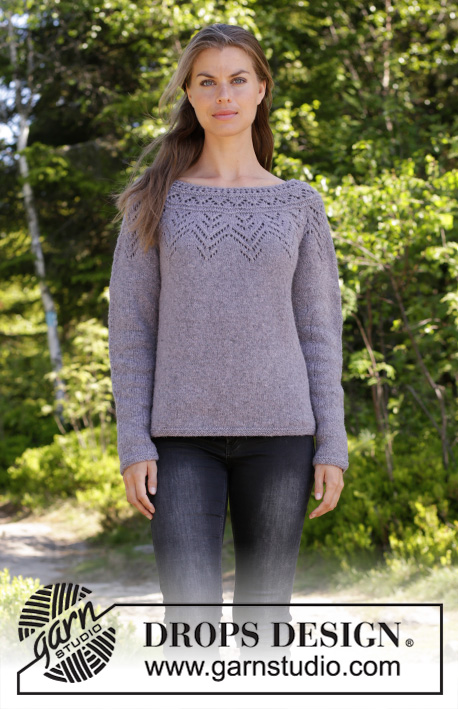 |
||||||||||||||||||||||||
Knitted jumper with round yoke in DROPS Sky. The piece is worked top down with lace pattern. Sizes S - XXXL.
DROPS 197-16 |
|||||||||||||||||||||||||
|
EXPLANATIONS FOR THE PIECE: ------------------------------------------------------- RIDGE/GARTER STITCH (worked in the round): 1 ridge = 2 rounds. Knit 1 round and purl 1 round. PATTERN: See diagrams A.1 and A.2. Choose diagram for your size. ELEVATION (for back of neck): The elevation is worked in garter stitch. Insert 1 marker at the start of the round (= approx. mid back). Start from the right side and knit as far as 7-8-8-9-9-10 stitches past the marker thread, turn, tighten the strand and knit 14-16-16-18-18-20 stitches back. Turn, tighten the strand and knit 21-24-24-27-27-30 stitches, turn, tighten the strand and knit 28-32-32-36-36-40 stitches back. Turn, tighten the strand and knit 35-40-40-45-45-50 stitches, turn, tighten the strand and knit 42-48-48-54-54-60 stitches back. Turn, tighten the strand and knit 49-56-56-63-63-70 stitches back, turn, tighten the strand and knit to marker thread. INCREASE TIP-1 (evenly spaced): To work out how to increase evenly, count the total number of stitches on the needle (e.g. 92 stitches) and divide these stitches by the number of increases to be made (e.g. 22) = 4.18. In this example, increase by making 1 yarn over after approx. each 4th stitch. On the next round, work the yarn overs twisted to avoid holes. INCREASE TIP-2 (for sides of body): All increases are made from the right side. Work until there are 2 stitches left before the marker thread, 1 yarn over, knit 4 stitches (the marker thread sits in the middle of these stitches) 1 yarn over. On the next round work the yarn overs twisted to avoid holes. Then work the new stitches in stocking stitch. DECREASE TIP-1 (for sleeves): Decrease 1 stitch on each side of the marker thread as follows: Work until there are 3 stitches left before the marker thread, knit 2 together, knit 2 (marker thread sits in the middle of these stitches), slip 1 as if to knit, knit 1, pass the slipped stitch over the knitted stitch. ------------------------------------------------------- START THE PIECE HERE: ------------------------------------------------------- JUMPER - SHORT OVERVIEW OF THE PIECE: The piece is worked in the round, top down with circular needle as far as the armholes, then the body and sleeves are finished separately. The body is continued in the round with circular needle. The sleeves are worked in the round with double pointed needles. YOKE: Cast on 92-96-100-108-112-118 stitches with circular needle size 3.5 mm and Sky. Work 2 RIDGES – read description above. Knit 1 round and increase 22-24-26-24-26-26 stitches evenly on round – read INCREASE TIP-1 = 114-120-126-132-138-144 stitches. Purl 1 round. Change to circular needle size 4 mm. For a better fit, you can now work an elevation in the back of the neck so that the yoke is slightly higher at the back. This elevation can be left out; the neck will then be the same front and back – read ELEVATION. Work A.1 (= 6 stitches) over all stitches (= a total of 19-20-21-22-23-24 times in width). On each round with a star (= increase round) work as follows: REMEMBER THE KNITTING TENSION! INCREASE 1: Increase 24-24-24-24-30-30 stitches evenly on round = 138-144-150-156-168-174 stitches. A.1 is then repeated 23-24-25-26-28-29 times in width. INCREASE 2: Increase 18-18-24-24-24-30 stitches evenly on round = 156-162-174-180-192-204 stitches. A.1 is then repeated 26-27-29-30-32-34 times in width. INCREASE 3: Increase 12-18-18-24-24-24 stitches evenly on round = 168-180-192-204-216-228 stitches. A.1 is then repeated 28-30-32-34-36-38 times in width. When A.1 has been worked 1 time in height the piece measures approx. 8 cm from the cast-on edge. Work A.2 (= 12 stitches) over all stitches (= 14-15-16-17-18-19 times in width). When A.2 has been worked 1 time in height there are 294-330-352-391-414-437 stitches on the needle. The piece measures approx. 21-22-22-24-24-24 cm. Continue in the round with stocking stitch until the piece measures 21-23-24-26-28-29 cm from the cast-on edge. Now divide the piece for body and sleeves as follows: Work stocking stitch over the first 42-47-49-57-62-66 stitches, place the next 64-72-78-82-84-88 stitches on a thread for sleeve and cast on 8-8-10-10-12-12 stitches under the sleeve, work stocking stitch over the next 83-93-98-114-123-130 stitches, place the next 64-72-78-82-84-88 stitches on a thread for sleeve and cast on 8-8-10-10-12-12 stitches under the sleeve, work 41-46-49-56-61-65 stitches stocking stitch = 182-202-216-247-270-285 stitches. BODY: Insert 1 marker thread in the middle of the 8-8-10-10-12-12 stitches under each sleeve. Work stocking stitch. When the piece measures 2 cm from where the body was divided from the sleeves, increase 1 stitch on each side of both marker threads – read INCREASE TIP-2. Increase like this every 2-2-2-3-3-2 cm a total of 11-11-11-9-9-12 times = 226-246-260-283-306-333 stitches. Continue with stocking stitch until the piece measures 30-30-31-31-31-32 cm from where the body was divided from the sleeves. Change to circular needle size 3.5 mm and work garter stitch until the piece measures 32-32-33-33-33-34 cm from where the body was divided from the sleeves. Cast off with knit. The piece measures approx. 56-58-60-62-64-66 cm from the shoulder down. SLEEVE: Place the 64-72-78-82-84-88 stitches from the thread on the one side of the piece on double pointed needles size 4 mm and knit up 1 stitch in each of the 8-8-10-10-12-12 stitches under the sleeve = 72-80-88-92-96-100 stitches. Insert 1 marker thread in the middle of the 8-8-10-10-12-12 stitches under the sleeve. Work stocking stitch in the round. When the piece measures 3 cm, decrease 1 stitch on each side of the marker thread - read DECREASE TIP-1. Decrease like this every 2½-2-1½-1½-1½-1½ cm a total of 13-16-19-19-20-21 times = 46-48-50-54-56-58 stitches. When the piece measures 42-41-40-39-37-36 cm from where the sleeve was divided from the body, change to double pointed needles size 3.5 mm and work 3 RIDGES in the round - see description above. Then cast off with knit. The sleeve measures a total of 65-66-66-67-67-67 cm from the cast-on edge. Work the other sleeve in the same way. |
|||||||||||||||||||||||||
Diagram explanations |
|||||||||||||||||||||||||
|
|||||||||||||||||||||||||
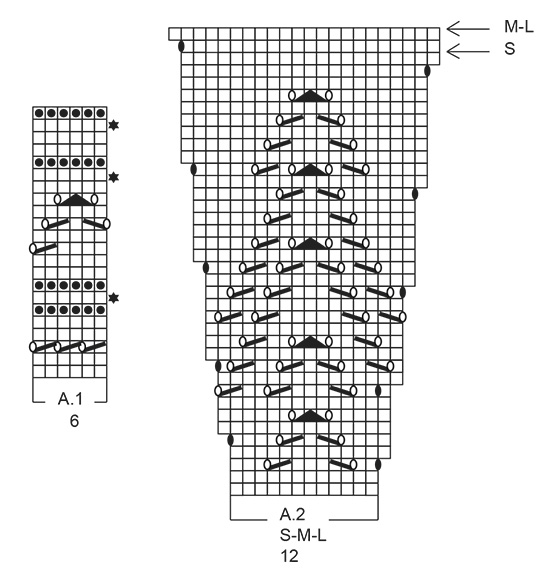 |
|||||||||||||||||||||||||
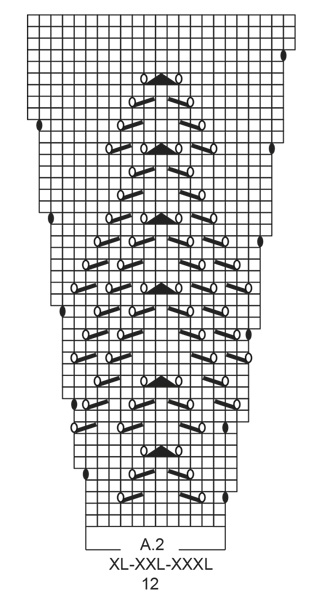 |
|||||||||||||||||||||||||
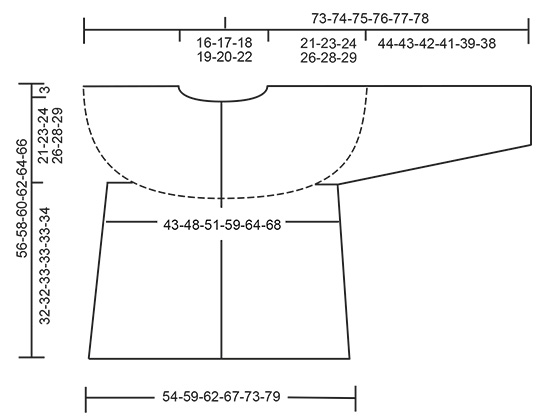 |
|||||||||||||||||||||||||
Have you finished this pattern?Tag your pictures with #dropspattern #agnessweater or submit them to the #dropsfan gallery. Do you need help with this pattern?You'll find 28 tutorial videos, a Comments/Questions area and more by visiting the pattern on garnstudio.com. © 1982-2025 DROPS Design A/S. We reserve all rights. This document, including all its sub-sections, has copyrights. Read more about what you can do with our patterns at the bottom of each pattern on our site. |
|||||||||||||||||||||||||







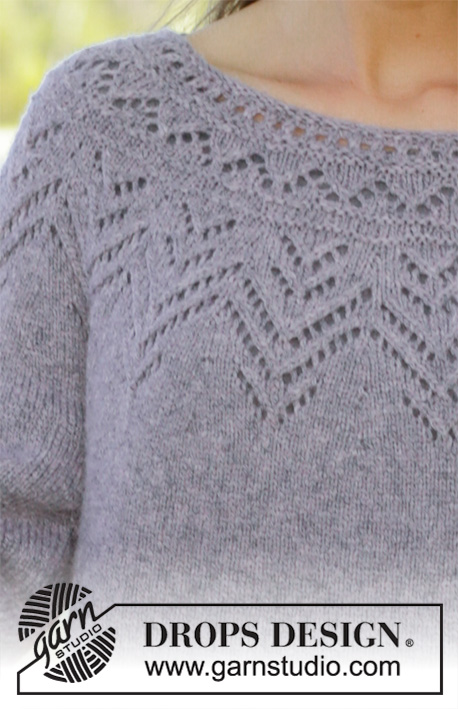
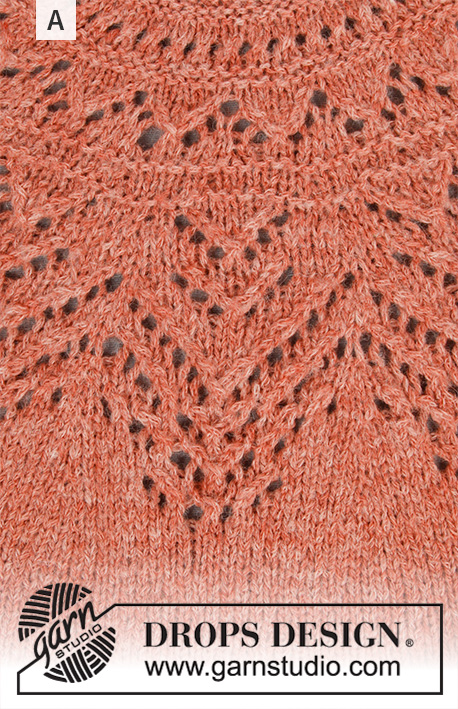

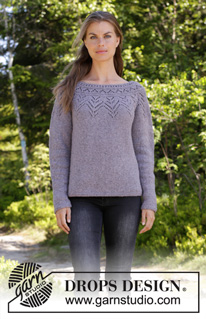
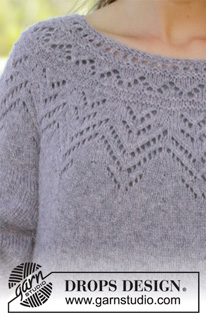
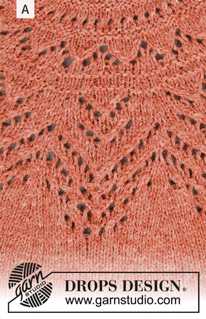








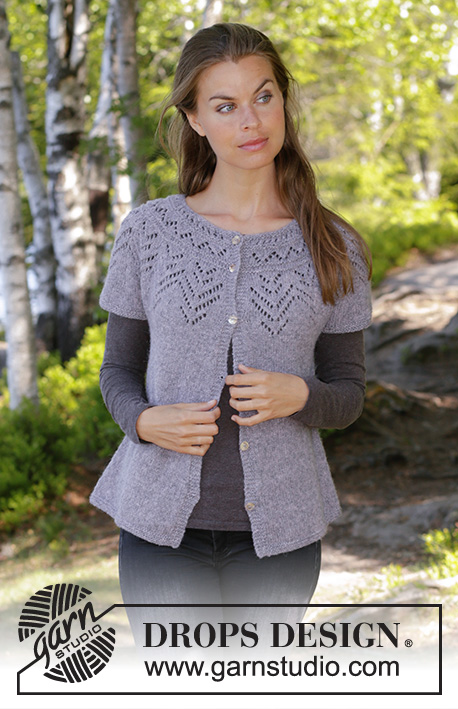

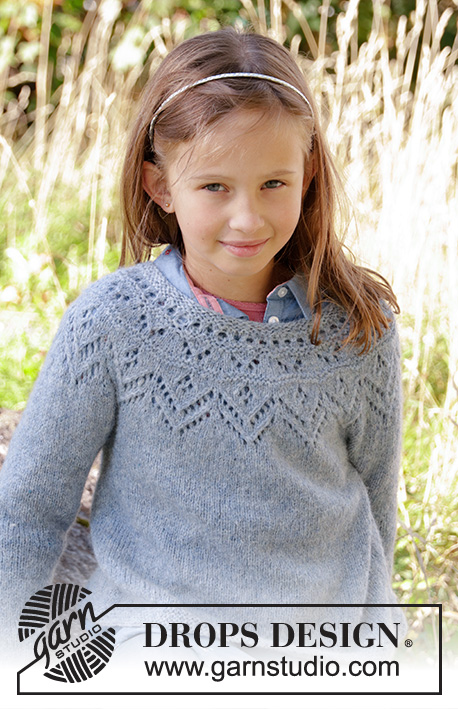
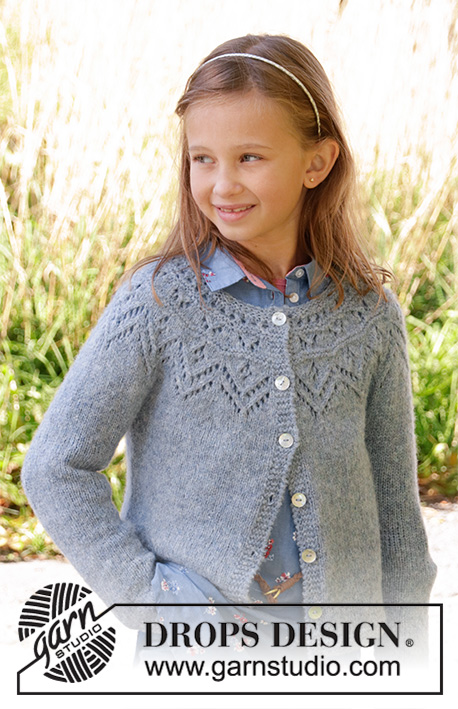





















































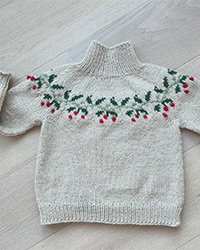
Post a comment to pattern DROPS 197-16
We would love to hear what you have to say about this pattern!
If you want to leave a question, please make sure you select the correct category in the form below, to speed up the answering process. Required fields are marked *.